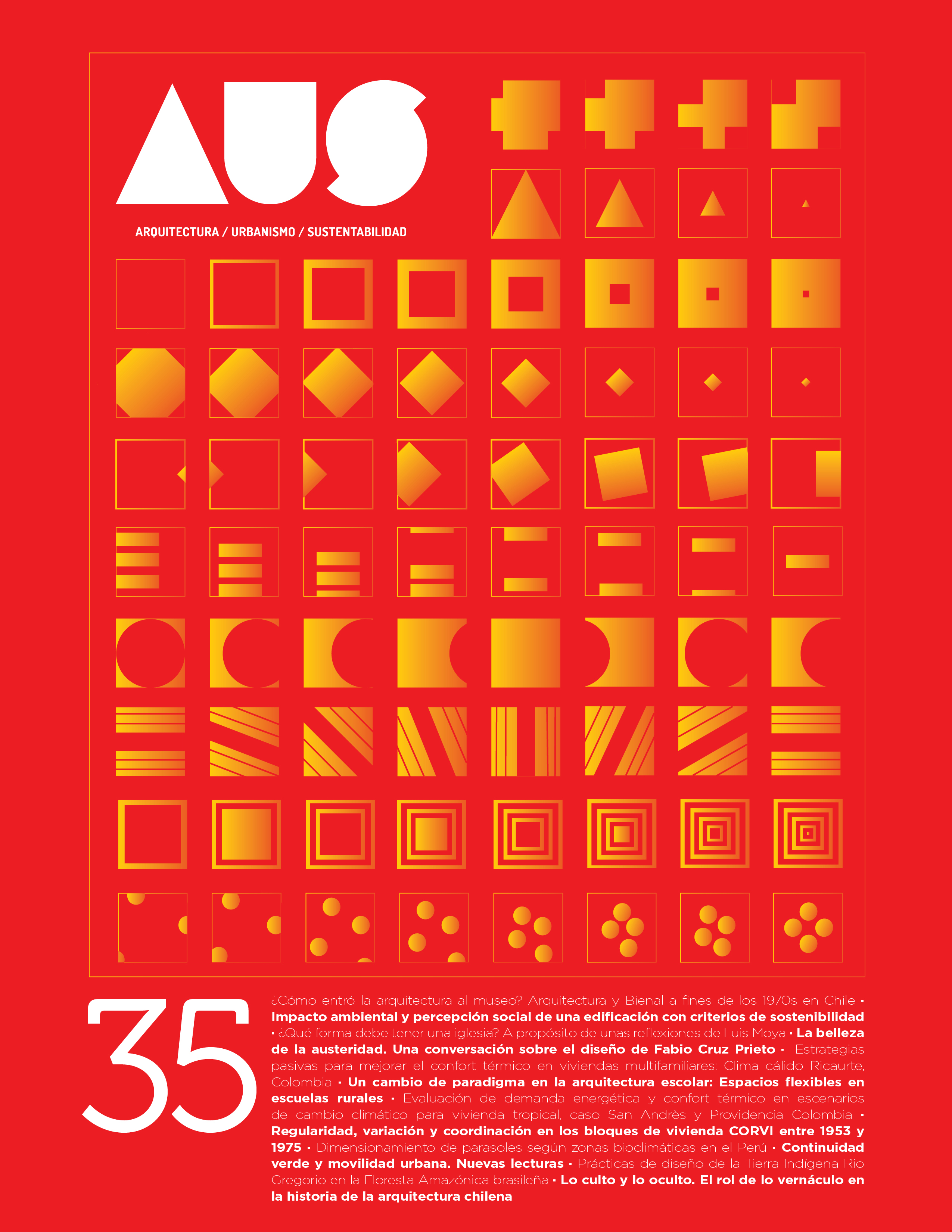Evaluation of Energy Demand and Thermal Comfort in Climate Change Scenarios for Tropical Housing: The Cases of San Andrés and Providencia, Colombia
Main Article Content
Abstract
Architecture and the building sector account for the largest share of energy consumption at the global level. This study compared results using future climate data in order to estimate climate changes and future thermal comfort variation in Colombia’s island areas, particularly San Andrés and Providencia. In spite of alterations in the thermal comfort range in future scenarios, a building’s energy demand increases in warm-humid climates. For this, advanced thermal-energy simulations were conducted with the Design Builder software on a basic housing model. The results showed that –for years 2030, 2050, and 2100– the energy demand could increase due to air conditioning needs given the already known impacts of global warming.
Article Details
References
American Society of Heating Refrigerating and Air Conditioning Engineers [ASHRAE]. (2017). ASHRAE standard 55-2017: thermal environmental conditions for human occupancy. ASHRAE Inc.
Bellia, L., Pedace, A., y Fragliasso, F. (2015). The role of weather data files in climate-based daylight modeling. Solar Energy, 112, 169-182. https://doi.org/10.1016/J.SOLENER.2014.11.033.
Bienvenido, D., Rubio, C., Marín, D., y Canivell, J. (2021a). Influence of the Representative Concentration Pathways (RCP) scenarios on the bioclimatic design strategies of the built environment. Sustainable Cities and Society, 72, 1-26. https://doi.org/10.1016/j.scs.2021.103042.
Bienvenido, D., Rubio, C., Pérez, A., y Pulido, J. (2020). Energy saving potential in current and future world built environments based on the adaptive comfort approach. Journal of Cleaner Production, 249, 1-2. https://doi.org/10.1016/j.jclepro.2019.119306.
Bienvenido, D., Sánchez, D., Rubio, C., y Pulido, J. (2021b). Applying the mixed-mode with an adaptive approach to reduce the energy poverty in social dwellings: the case of Spain. Energy, 237, 1-19. https://doi.org/10.1016/j.energy.2021.121636.
Cellura, M., Guarino, F., Longo, S., y Tumminia, G. (2018). Climate change and the building sector: modelling and energy implications to an office building in southern Europe. Energy for Sustainable Development, 45, 46-65. http://dx.doi.org/10.1016%2Fj.esd.2018.05.001.
César, S., May, C., Carval, V., Ann, S., Taylor, G., y Jay, B. (2003). San Andrés Islas. Seguimiento y evaluación - POT 2003. https://www.consejodeestado.gov.co/documentos/boletines/118/S1/88001-23-31-000-2005-00067-02.pdf
Consejo Colombiano de Construcción Sostenible [CCCS]. (2022). Hoja de ruta nacional de edificaciones neto cero carbono. Programa de las Naciones Unidas para el Medio Ambiente (PNUMA).
Fonseca, L., y Saldarriaga, A. (1985). Cuadernos PROA 7. Vivienda en madera en San Andrés y Providencia. Ediciones PROA Ltda.
Grupo Intergubernamental de Expertos sobre el Cambio Climático [IPCC]. (2014). Cambio climático 2014. Informe de síntesis. OMM.
Huang, J., y Gurney, K. (2016). The variation of climate change impact on building energy consumption to building type and spatiotemporal scale. Energy, 111, 137-153. https://doi.org/10.1016/j.energy.2016.05.118.
Instituto de Hidrología, Meteorología y Estudios Ambientales [IDEAM]. (2017). Tercera Comunicación Nacional de Cambio Climático - Resumen Ejecutivo. IDEAM.
Kikumoto, H., Ooka, R., Arima, Y., y Yamanaka, T. (2015). Study on the future weather data considering the global and local climate change for building energy simulation. Sustainable Cities and Society, 14(1), 404-413. https://doi.org/10.1016/j.scs.2014.08.007.
Sánchez, C. (2009). The last China closet. Arquitectura, memoria y patrimonio en la Isla de San Andrés. Universidad Nacional de Colombia.
Varini, C. (2015). Calidad de vida en la vivienda social de San Andrés, Colombia, mediante la gestión bioclimática de flujos de aire. Nodo: Arquitectura. Ciudad. Medio Ambiente, 10(19), 101-110. https://revistas.uan.edu.co/index.php/nodo/article/view/129.
Zhai, Z., & Helman, J. (2019). Implications of climate changes to building energy and design. Sustainable Cities and Society, 44, 511-519. https://doi.org/10.1016/j.scs.2018.10.043.

